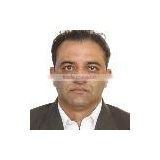18x7x2 inch Himalayan Salt Block Plate Slab for BBQ Cooking Searing Serving
USD $1 - $10 /Piece
Min.Order:500 Pieces
Quick Details View All >
18x8x2 inch Himalayan Salt Block Plate Slab for BBQ Cooking Searing Serving
Himalayan Salt Block Plate Slab for BBQ Cooking Searing Serving 18" x 10" x 2"
Himalayan Salt Block Plate Slab for BBQ Cooking Searing Serving Size 18" x 12" x 2"
18" x 14" x 2" Himalayan Salt Block Plate Slab for BBQ Cooking Searing Serving
20x8x2 inch Himalayan Salt Block Plate Slab for BBQ Cooking Searing Serving
20x10x2 inch Himalayan Salt Block Plate Slab for BBQ Cooking Searing Serving
Product Details
Please Note:
Pakistani Pink Himalayan salt blocks, plates, platters, and bricks can be used for sautéing, grilling, chilling, curing, baking, salting, plating, bathing, and contemplating.
Product Description:
Himalayan Salt Block Recipe & Cooking Ideas
Armed with that knowledge, we unleash the hounds and set to. Here are just a few of our favorite uses for our Pakistani Pink Himalayan Salt Plates.
f) Impress your Jewish grandma with Gravlax. Thaw a filet of commercially frozen (for health reasons) salmon, roll in sugar and minced dill, arrange on a Himalayan salt plate, cover with a heavy brick of Himalayan salt, wrap in paper bag and refrigerate for three days, slice, serve with crème fraîche and melba toast or just eat!
g) Getting back to basics, just use it as a serving platter for butter, cheeses, dried meats, or your daily does of
pickled ginger and wasabe. When used as a plate for moist food such as apple slices and mozzarella, the food acquires an enhanced salt and mineral flavoring. One of ours serves as our regular butter dish.
Caring for your Pakistani Pink Himalayan Salt Plate
After each use, wash your Himalayan salt plate with warm water and a soft brush or green scrubby, and tamp dry with a paper towel before setting on a drying rack. This will remove a very thin layer of the salt and make it ready for use again. Treated with care, a large salt slab will provide years of service! In addition, the powerful antimicrobial properties of the salt insure that it is always proper and ready for future use, with no need for detergents.
Ogling Your Salt
Ancient quarried salt is a hologram through which the mineral lineage of own bodies can be discerned. In effect, it tastes good to us because it is a reflection of our own primordial physiology.
To gain an appreciation for the beauty of this salt, let your mind drift overland, off the path, and into the wilds of the Hindu Kush, where wildflowers scatter under the tessellated fingerprint of a mild spring breeze. We take up with the torrents of the Amu Darya river, and just keep climbing along the ancient path where recorded history began, back in the 6th century BC, under the Achaemenid Empire.
After several days more of rugged hiking, in the rarified air of northern Pakistan’s Himalaya mountain range, we find a quarry where men pull massive boulders of luminescent pink ore from the earth, glowing like freshly harvested meteorites.
Gaze into the deep ferrite light of a massive block of Himalayan salt, and glimpse the unfathomed history of our planet. Pakistani pink Himalayan salt was formed in the Precambrian era, about 600 million years ago, as a great inland sea evaporated. Volcanic and other geological activity then sealed the salt in a hermetic vault where, over eons, it was subjected to the intense pressure and heat of the deep earth.
Tracing the history of our own biological development, the salt is rich in iron, calcium, and 82 other trace minerals contains all the trace minerals present in your body—and in a remarkably similar balance. Over countless lost ages the land encasing the ancient seabed up rose to become the Himalayas. Meanwhile, the scattering of Eukaryotic cells that comprised all life on earth evolved into shellfish and trilobites. Fish began to swim in the sea, great fern forests emerged, and then came the reptiles. Still the salt glowed darkly in the depths of the earth. Dinosaurs grew to towering heights, mammals peeked from beneath the leaves, and birds took flight. Grazing and carnivorous mammals, and then primates took hold, and still the salt remained in darkness.
Man appeared, gawking at the heavens and whittling spears, then scattering across Asia and beyond. 1.8 million years later, one lovely evening in 326 BC, Alexander the Great gave his troops a rest in the Khewra area of what is now Pakistan. An observant fellow noted in his diary that the horses were taken with licking the rocks—and lo, salt was discovered. Some eighteen centuries later, Jalaluddin Muhammad Akbar was born. At the happy age of thirteen, the boy’s father fell to his death from the library stairs, and Akbar ascended to become the greatest Mughal emperor. Akbar’s two lasting contributions were the vast accessioning of art from around the world into the Mughal collections, and the introduction of standardized salt mining at Khewra.
Our Pakistani Pink Himalayan Salt is harvested in the same way it was under Akbar. The choice boulders from the harvest—sometimes weighing in excess of 500 pounds—are sliced into cubes and platters and planks and chunks for use on your table.
Contact Supplier

You May Like






New Products
Popular Searches
Recommended Products
Find Similar Products By Category